FINDING $1.5M IN YOUR BROWNSTONE (1934)
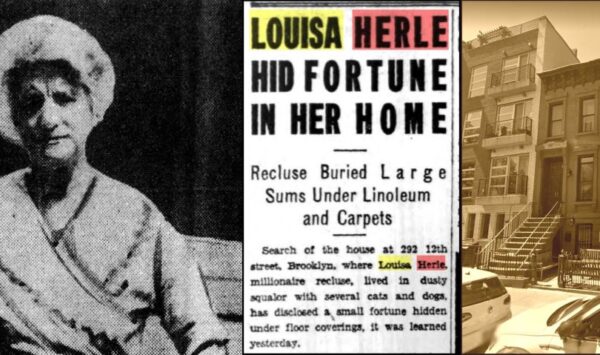
******************************************************************************************************************************** Brownstone Detectives investigates the history of our clients’ homes. The story you are about to read was composed from research conducted in the course of one of those investigations. Do you know the history of YOUR house? ******************************************************************************************************************************** Does a small fortune lie secreted away within the walls of your brownstone? If you live in a certain Park Slope brownstone, you may want to start looking… THE FORTUNE AT NO. 292 12th STREET (The following story comes from the Friday, 2 November 1934 edition of the Home Talk section of The Brooklyn Eagle newspaper.) She died as she had lived—alone. Miss Louisa Herle, 74-year-old wealthy recluse, of No. 292 12th St., was the Hetty Green of South Brooklyn, and although she slept on a dilapidated leatherette lounge in her kitchen, she left a fortune of $1,500,000. The dead body of the aged spinster was found lying on the lounge Wednesday, where it had lain for three days. She had removed her shoes before she lay down, and her stockings had been placed over the arm of a rocking chair. In the squalid two rooms on the street floor of the old brownstone house, Miss Herle had lived since 1916, when her brother had died. Following his death she closed the upper floors of the-house, and the rooms, inches deep in dust, and piled high with broken furniture, had never been opened since. Three heavily barred doors led into the living room where an old fashioned safe stood. Miss Herle, […]
A STREET GROWS IN BROOKLYN (1845)
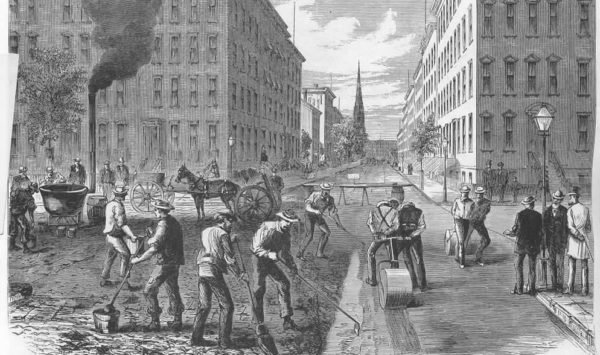
******************************************************************************************************************************** Brownstone Detectives investigates the history of our clients’ homes. The story you are about to read was composed from research conducted in the course of one of those investigations. Do you know the history of YOUR house? ******************************************************************************************************************************** The growth of brownstone Brooklyn took place over a great many years. The long contiguous lines of rowhouses rocketed skywards across the city through the economic good times, as well as – at a less robust pace – through the many debilitating recessions. But rocket they did, leaving the footprints of the many contractors and builders who changed the landscape of Brooklyn into a City of Houses. Another mark that the contractors and builders left – although one not as celebrated today – was the complicated system of flagging, pipes, sewers, cisterns, streetlamps, and sometimes trolley tracks, that lined the streets and led to those very rowhouses. Each delivery and receiving system that connected each rowhouse to the city was an important step toward the development of the city. Before each row of houses was constructed (and sometimes while they were being constructed, or even soon afterwards), the development of each street and neighborhood was an important part of attracting the homeowners to Brooklyn. THE BIRTH OF BOERUM HILL Boerum Hill had only recently been planned for with a street grid system that would develop alongside of a vast network of sidewalks, sewers, street lamps, gas lines, and water mains. At this time, however, in the 1840s, it barely resembled such […]
A BLACK PORTER ON WHITE 12TH ST (1901)
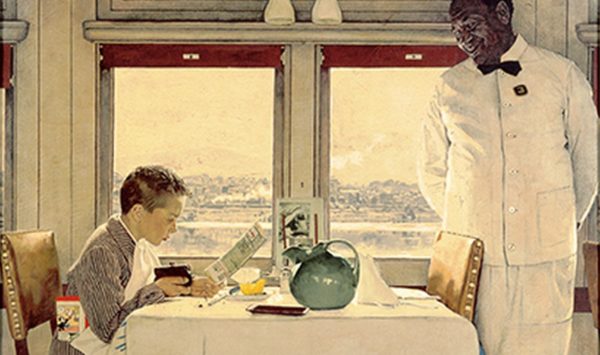
******************************************************************************************************************************** Brownstone Detectives investigates the history of our clients’ homes. The story you are about to read was composed from research conducted in the course of one of those investigations. Do you know the history of YOUR house? ******************************************************************************************************************************** Back in Victorian Brooklyn, segregated neighborhoods were the norm. The only blacks that most whites expected to see on their streets were those who worked there as maids or who participated in other working class trades. Blacks – commonly referred to then as “coloreds” or “Negroes” – rarely lived cheek-and-jowl with whites. On the rare occasion that a black family moved into a white neighborhood, an enormous amount of pressure was usually placed upon the family to move out immediately. It was for this reason that most neighborhoods remained segregated by the turn of the century. One such “Negro” family moved into the Gowanus section of Brooklyn in 1901, at No. 198 Twelfth Street, between Third and Fourth Avenues. It was not long before the family’s new white neighbors started to show their own colors as they began – very publicly in the newspapers – to register their extreme displeasure and disgust at the “intruders” on their block. This was a very highly charged story, to be sure, but was it factual? Or, was it generated to sell a house? The Brownstone Detectives investigated… WHOLE BLOCK EXCITED OVER ADVENT OF NEGROES… This story took place in the summer of 1901. Reported by the Brooklyn Daily Eagle, it seemed a sensationalist piece, […]
THE RENTERS OF CARROLL GARDENS (2017)
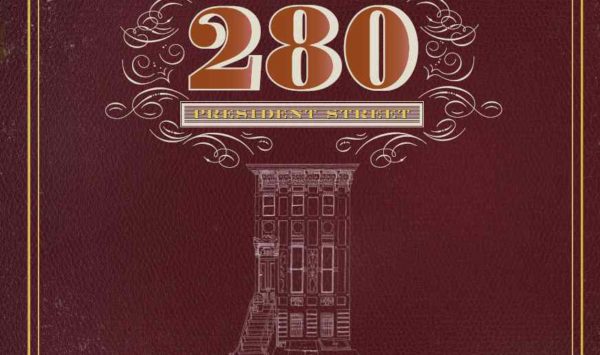
“A British cheese dealer, a newsman who predicted his own death, a leather merchant with a penchant for chorus girls, an alleged wife murderer, a German dentist with political aspirations, a Norwegian hero tugboat captain, and an Italian bomb builder…” These are many of the characters who were discovered during the recent investigation into the history of a Carroll Gardens brownstone. The historic property, No. 280 President Street, is an 1880 brownstone that was, additionally, built by a man who turned out to be the product of a clandestine relationship that rocked Brooklyn in the 1870s with stories of challenged wills, mental illness, and “other” women, presented under such headlines as “BEDEVILED” and “DRAKE’S WILL: His Illegitimate Children Most Carefully Provided for.” For nearly 100 years after the house was completed, No. 280 served its various owners as a rental property. The first owners to actually live in the home, Joachim and Eunice Auer, purchased it in 1979. After navigating redlining, remediating a rat and termite infestation, and entering into a year-long renovation, the Auers settled into enjoying their 2-story and basement home directly across the street from Carroll Park. While the Auers had always been interested in the history of their house (indeed, it was one of the reasons that they bought the house), and after doing some amount of research themselves, they decided to find someone who could more fully track down the history of their home. They turned to a detective – a Brownstone Detective. After a year […]
SHE MASQUERADED IN MALE ATTIRE (1894)
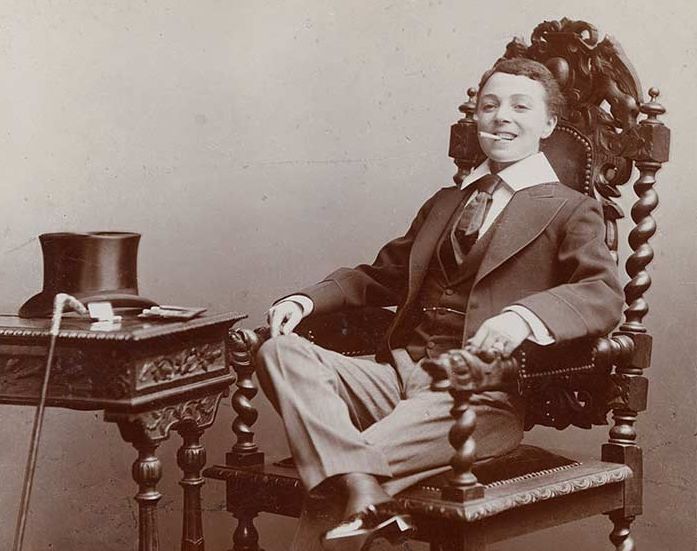
******************************************************************************************************************************** Brownstone Detectives investigates the history of our clients’ homes. The story you are about to read was composed from research conducted in the course of one of those investigations. Do you know the history of YOUR house? ******************************************************************************************************************************** Poor Mrs. Emily Lund. She was not prone to wearing men’s clothing – at least not in public. But the night in 1894 that she did dress so, she was arrested and tossed in the slammer. Officer Michael Quinn of the Hamilton Avenue police station arrested Lund, on Van Brunt, in Red Hook (or “South Brooklyn”) near William. The 55-year-old domestic had been discovered there attired “in a pair of trousers, a vest and a long mackintosh.” THE NIGHT IN JAIL After spending the night in jail, she was arraigned in the Butler street police court the next day. Her husband, who could not bring himself to even show his face, had his mother appear in his place. She brought “an outfit of women’s clothing” for his wife. When “Emily could make no coherent reply to Justice Tighe’s questions as to why she masqueraded in male attire,” Mrs. Lund’s mother-in-law told the court that her daughter-in-law’s “mind was affected.” POSTSCRIPT: “WHAT HAPPENED TO EMILY?” OR “THE POWER OF PUBLIC SHAMING” Whether that was the truth or Emily’s mother-in-law simply found the explanation convenient and a good cover up of the actual truth, it is not known. What we can guess, though, is that the Lund family was probably the butt of […]
92 ROUNDS IN IRISH RED HOOK (1864)
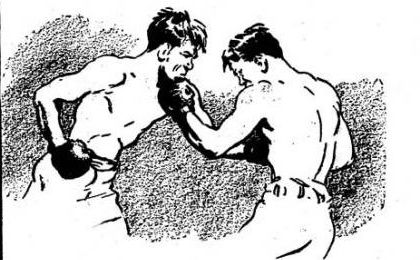
******************************************************************************************************************************** Brownstone Detectives investigates the history of our clients’ homes. The story you are about to read was composed from research conducted in the course of one of those investigations. Do you know the history of YOUR house? ******************************************************************************************************************************** It was an amazing feat even for the times. Although fights were often arranged for the amusement of their onlookers or the profits of the inevitable bettors back then, unauthorized prize fights were, even in 1864, against the law. It was in that year that just such an illegal “Feather Weight” contest was arranged, “in the rosin yard at the foot of Van Brunt street at 7 o’clock” the morning of 4 December. IRISH BARE-KNUCKLE BOXING The Irish, it was maintained, were known for their fighting spirit, and Red Hook, having no dearth of wiry Irish lads looking to swing a punch or two at any adversarial comers, this particular match did not appear to be an uncommon occurrence. There was no main stake in the result of the fight, noted the Brooklyn Daily Eagle, but “small bets were plentiful, and over $1,000 in greenbacks were said to have changed hands on the issue.” The Brooklyn Daily Eagle called the affair “disgraceful,” but then went on to describe the “prize fight” and its participants in the most glowing and respectful tones, noting that “the lovers of the manly art rejoiced.” THE CONTESTANTS One of the boys was Paddy McGrath, “who belongs at the corner of Van Brunt and Wolcott street when […]